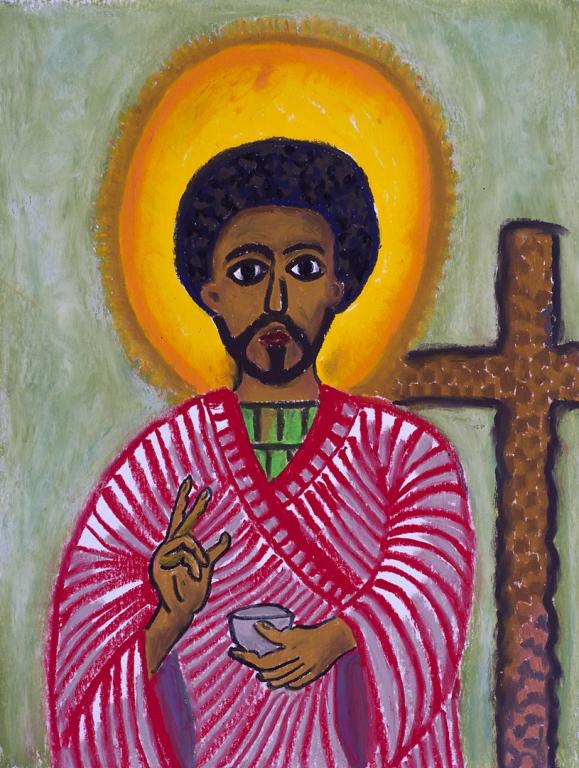SEPTEMBER 3, 2020 BY GENE VEITH
The Christian History site, sponsored by Christianity Today, has posted a fascinating article about the influence of Ethiopia on Luther and the Reformation.
Wheaton theology professor Jennifer Powell McNutt, in her article An Unsung Inspiration for the Protestant Reformation: the Ethiopian Church, recounts how the Reformation–far from being an exercise in individualism–saw itself in the context of the historical church and global Christianity. The Reformers looked to the Orthodox churches of the East and of Africa as providing a precedent for many of their reforms.
When Rome insisted that there can be no church without a Pope, the Reformers pointed to the Orthodox churches, which have no Pope and whose practices pre-date those of Medieval Catholicism. Those churches do not emphasize Purgatory and do not sell indulgences. They do not worship in Latin. Their clergy could marry. And yet even Rome admitted that the Eastern churches, despite the Great Schism of 1054 at the very beginning of the Medieval era, were true churches.
Luther was especially interested in the Orthodox church of Ethiopia, which he believed was founded by the Ethiopian eunuch of Acts 8, making it one of the most ancient of all church bodies. Luther mentioned Ethiopia 85 times in his writings. Luther was even visited in 1534 by an Ethiopian cleric, Michael the Deacon.
Here is the account in Wikipedia of that meeting:
In 1534, Michael the Deacon travelled to Wittenberg and met with Martin Luther, a leader in the Reformation.[2][3] During the meeting, the two compared the Lutheran Mass with that used by the Ethiopian Orthodox Church and found that they were in agreement with one another.[1][4] Michael the Deacon also affirmed Luther’s Articles of the Christian Faith as a “good creed”.[3][1] As such, the Lutheran Churches extended full communion to the Ethiopian Orthodox Church.[5][1]
Prof. McNutt summarizes Luther’s interest in Ethiopia:
Luther marveled at how the churches of Armenia, Ethiopia, and India had avoided the private masses that developed in the West since Gregory the Great’s time. Luther also regarded it significant that, before there was a “pope,” there were the bishops of Ethiopia, Syria, Antioch, and Rome. The Orthodox branches were a link back to a purer, more apostolic era.
The church of Ethiopia, especially, was mentioned among early modern Christians. Some scholars have noted that Luther mentions Ethiopia at least 85 times in his written works. (It was a common though mistaken belief to view Ethiopia as the first Christian kingdom. That belief was based on a particular reading of Acts 8.) Luther’s esteem only grew after he was visited by Michael the Deacon, an Ethiopian cleric, in 1534. As Daniels explains,
For Luther, the Church of Ethiopia had more fidelity to the Christian tradition. … Thus, the Church in Europe needed to be reformed in the direction of the Church of Ethiopia. Possibly for Luther the Church of Ethiopia was proof that his reform of the Church in Europe had both a biblical and a historical basis.
To Luther, “Ethiopia” symbolized the church, and one of the most valued legacies that the Reformers identified within the Ethiopian church was its insistence on maintaining the Bible in the common language.
The church of Ethiopia had the Bible in its own language, as did other Orthodox churches, and this became an important precedent for the principle of vernacular Bible translations.
Later, in the 1570s, Lutheran theologians, led by Jacob Andreae–one of the key contributors to the Book of Concord–began a correspondence with the Patriarch of Constantinople, sending him a Greek translation of the Augsburg Confession in an effort to find common ground.
But there were more differences between Lutheranism and Eastern Orthodoxy than the early Reformers had realized, particularly regarding the authority of Scripture and justification by faith alone. (See this account of those early theological dialogues. For the original sources, go here.)
But it is surely significant that today, the Ethiopian Evangelical Church Mekane Yesus [place of Jesus], with 9 million members, is the largest Lutheran church body in the world.
Illustration: Icon of Michael the Deacon by Inès Lee CC BY-SA 4.0, https://en.wikipedia.org/w/index.php?curid=57897435 via Wikimedia Commons

